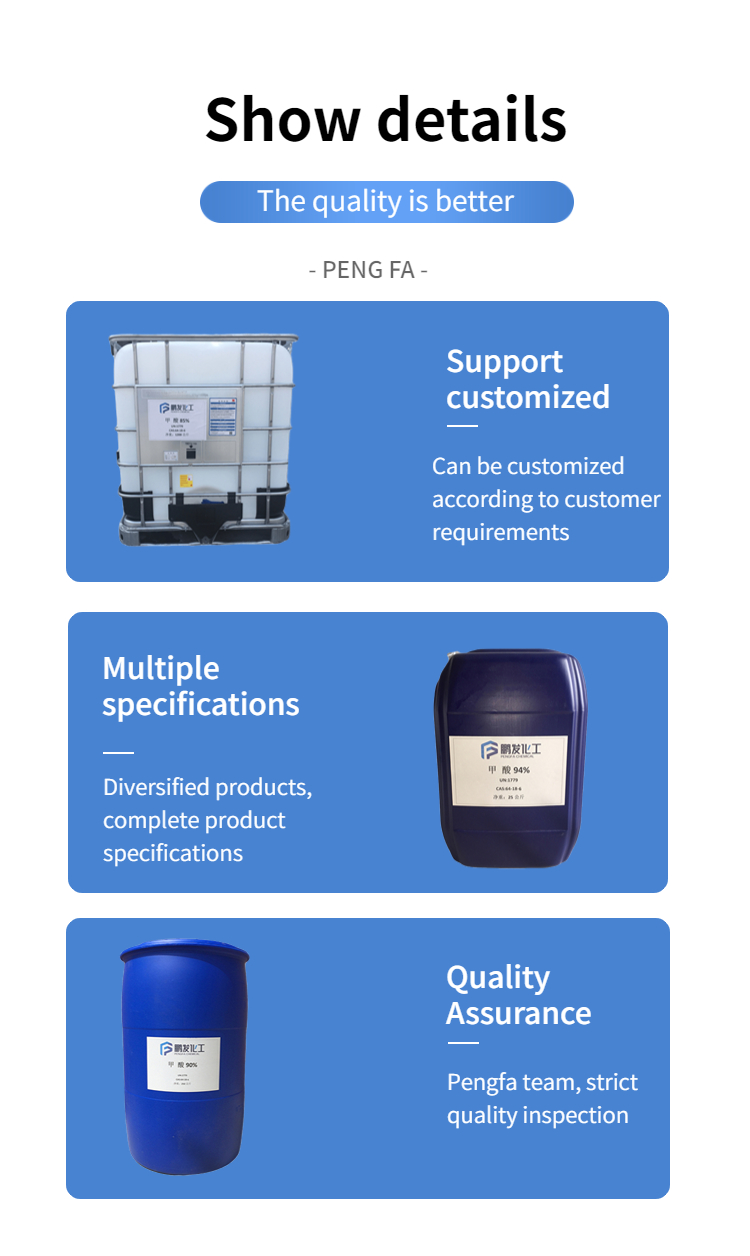Formic acid is a very common chemical product in our life. For most people, the main feature of formic acid is its pungent smell, which can be smelled far away, but this is also the impression of most people on formic acid.
So what is formic acid? What kind of use is it for? Where does it show up in our lives? Wait, a lot of people can’t answer that.
In fact, it is understandable that formic acid is not a public product after all, to understand it, or to have a certain knowledge, occupation or professional threshold.
As a colorless, but there is a pungent smell of liquid, it also has a strong acid and corrosive, if we are not careful to use fingers or other skin surface and direct contact with it, then the skin surface will be because of its irritating direct foaming, need to see a doctor as soon as possible, for treatment.
But even if formic acid is relatively general in public awareness, but in real life, it is actually one of the most widely used chemical products, not only appear in all aspects of our lives, there are a lot of you have not thought about the field, in fact, formic acid exists, and also made a lot of contributions, has an extremely important position.
Formic acid can be found in industries such as pesticides, leather, dyes, pharmaceuticals and rubber, if you pay a little attention.
Formic acid and aqueous solutions of formic acid can not only dissolve metal oxides, hydroxides and various metals, but also the formates they produce can be dissolved in water, so they can also be used as chemical cleaning agents.
In addition to the above applications, formic acid can also be used in the following ways:
1. Medicine: vitamin B1, mebendazole, aminopyrine, etc.;
2, pesticides: powder rust ning, triazolone, tricyclozole, triamidazole, polybulozole, tenobulozole, insecticidal ether, etc.;
3. Chemistry: calcium formate, sodium formate, ammonium formate, potassium formate, ethyl formate, barium formate, formamide, rubber antioxidant, neopentyl glycol, epoxy soybean oil, epoxy octyl soybean oil, tervalyl chloride, paint remover, phenolic resin, pickling steel plate, etc.;
4, leather: leather tanning preparation, deashing agent and neutralizing agent;
5, rubber: natural rubber coagulant;
6, others: printing and dyeing mordant, fiber and paper dyeing agent, treatment agent, plasticizer, food preservation and animal feed additives, etc.
Post time: May-26-2023


